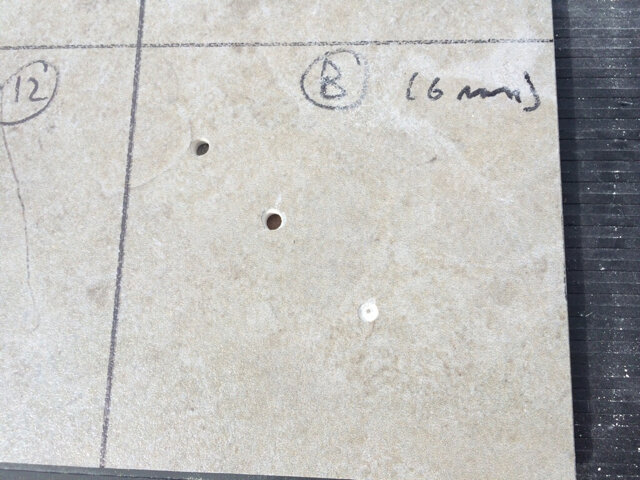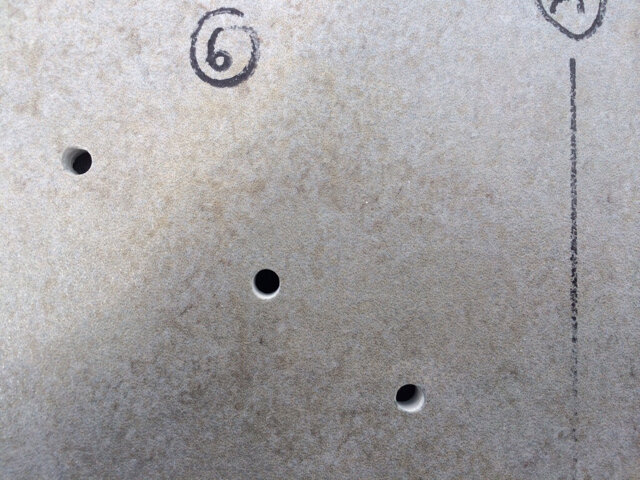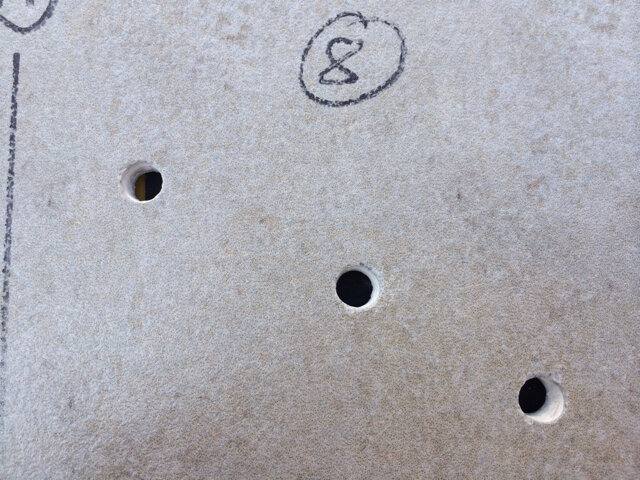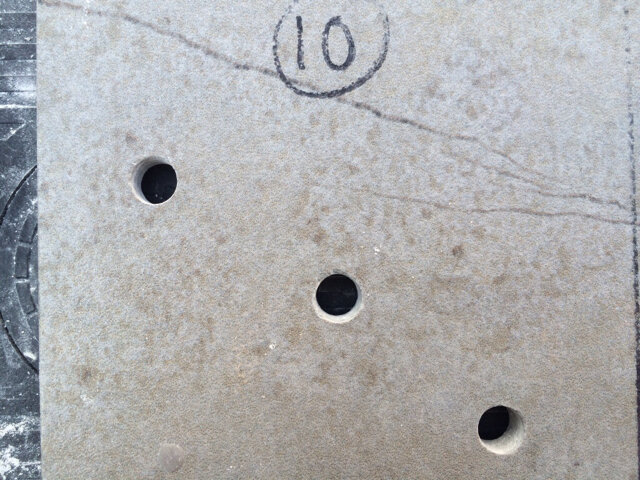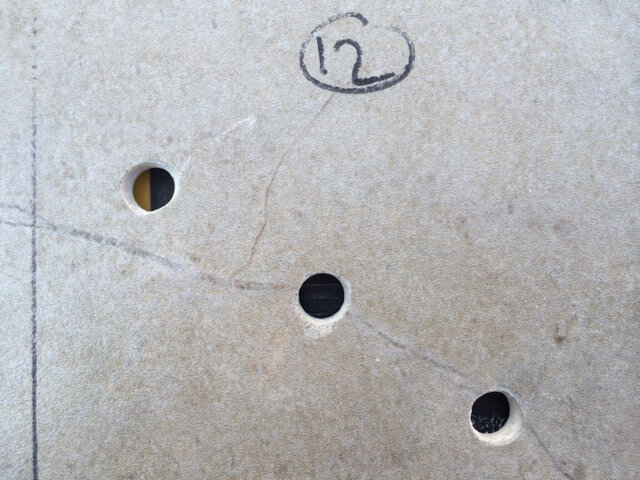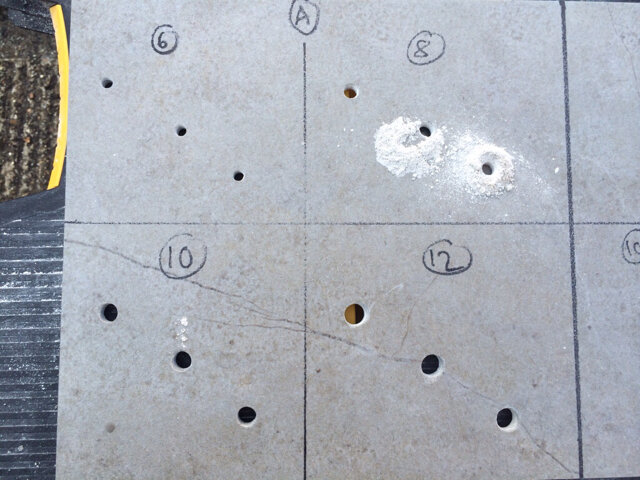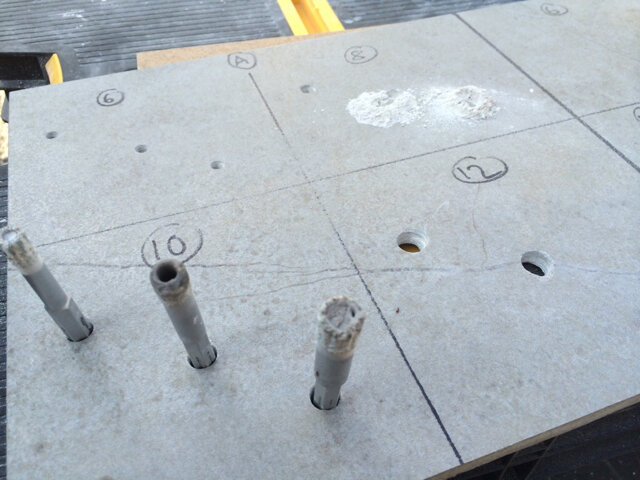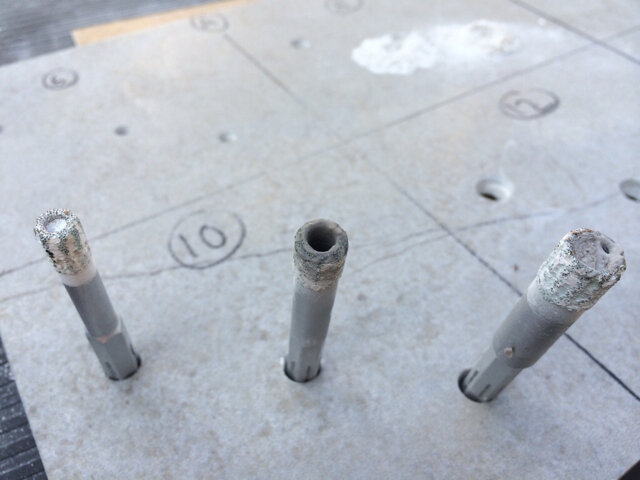Q
Qwerty
Alan from ATS diamond tools sent me a handful of new and untested vacuum brazed diamond core drills to test. These are different from the existing dry core drills in that they are designed for use in a drill (speed over 1500rpm).
I was very impressed! I was drilling into a full bodied vitrified porcelain tile.
Alan sent me 1 of each of the following - 6mm, 8mm, 10mm & 12mm (A bits). He also sent me 1x6mm bit (B bit).
I started off using my SDS (normal drilling mode) but soon changed over to my 18v Makita cordless. Even though this only has a 1300rpm top speed, it was far easier to drill with this. Not sure if that is because my SDS is so heavy or because there is very little feedback when drilling.
I started off with the 'B' 6mm bit. Even though this was the first bit I tried I didn't really like it. It seemed a bit vague and didn't cut too well. I gave up after starting the third hole with this bit. The two holes it did cut were quite good but it seemed to struggle quite quickly.
I then moved onto the 'A' 6mm bit. This cut with ease. The wax core was working really well to cool the bit and each hole cut consistently and cleanly. I moved onto the 8mm bit which seemed much the same as the 6mm. Nothing noticeably negative to say about either of these really.
The 10 & 12mm bits weren't as good initially as the two smaller bits. They were very difficult to start off and wanted to stray a lot. Once they had cut in, they cut with ease. I did notice though that they had a habit of chipping the face of the tile where chunks of the core were being ejected out of the side. These both had an issue of the last bit of the core getting stuck in the bit which then never came out. I carried on drilling and found with the 10 & 12mm bits that after around 5 holes the cores "jammed" in the core with no way of me getting them out.
All in all I am very impressed with these bits, but mainly the two smaller sizes. They are more versatile than the angle grinder bits and seemed to cut better too! Thanks Alan
Alan from ATS Diamond Tools will be able to clarify any points such as differences between the A & B bits etc
I was very impressed! I was drilling into a full bodied vitrified porcelain tile.
Alan sent me 1 of each of the following - 6mm, 8mm, 10mm & 12mm (A bits). He also sent me 1x6mm bit (B bit).
I started off using my SDS (normal drilling mode) but soon changed over to my 18v Makita cordless. Even though this only has a 1300rpm top speed, it was far easier to drill with this. Not sure if that is because my SDS is so heavy or because there is very little feedback when drilling.
I started off with the 'B' 6mm bit. Even though this was the first bit I tried I didn't really like it. It seemed a bit vague and didn't cut too well. I gave up after starting the third hole with this bit. The two holes it did cut were quite good but it seemed to struggle quite quickly.
I then moved onto the 'A' 6mm bit. This cut with ease. The wax core was working really well to cool the bit and each hole cut consistently and cleanly. I moved onto the 8mm bit which seemed much the same as the 6mm. Nothing noticeably negative to say about either of these really.
The 10 & 12mm bits weren't as good initially as the two smaller bits. They were very difficult to start off and wanted to stray a lot. Once they had cut in, they cut with ease. I did notice though that they had a habit of chipping the face of the tile where chunks of the core were being ejected out of the side. These both had an issue of the last bit of the core getting stuck in the bit which then never came out. I carried on drilling and found with the 10 & 12mm bits that after around 5 holes the cores "jammed" in the core with no way of me getting them out.
All in all I am very impressed with these bits, but mainly the two smaller sizes. They are more versatile than the angle grinder bits and seemed to cut better too! Thanks Alan
Alan from ATS Diamond Tools will be able to clarify any points such as differences between the A & B bits etc

